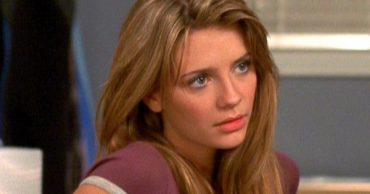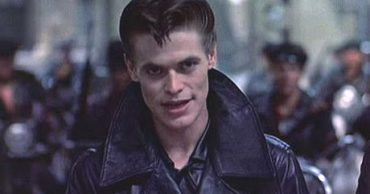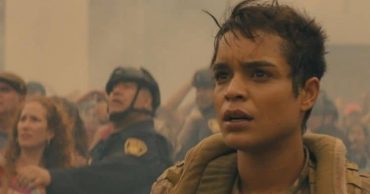
Binged everything on Netflix, Disney+ and Hulu while in quarantine? If you like documentaries, a film worth giving a second shot is Gravitas Ventures’ We Stand Corrected: Dannemora. The doc pulls back the curtain on the intricacies of the prison system, the dynamics between officers and inmates and the aftermath of the largest manhunt in New York state history. It was also an alternative narrative to Ben Stiller’s award-winning Showtime limited series, Escape at Dannemora. You can currently purchase the doc on Amazon, Youtube, Google Play and Vudu. You can also stream for free on Tubi and Sling TV. Adding to the drama of the narrative is the score by composer Jeremy Nathan Tisser. Jeremy does a great job of heightening the emotion while creating suspense. We spoke to Jeremy about his work on the project below.
How did you get connected with We Stand Corrected: Dannemora? What was your initial appeal to the project?
I was first introduced to the director, Richie Elson, through his wife, Lisa, maybe 6 years ago. Richie and I hit it off almost immediately! I scored a short film for him back then, and we’ve been good friends ever since. After the prison break took place, Richie got right to work on the documentary, and called me to see if I was interested in writing the music. Of course, I accepted! It turns out, his father worked at Clinton Correctional Facility for many years, and Richie is from a neighboring area, so the story hit very close to home for him. He began uncovering all of these details that the state tried to hide from the public. This wasn’t a simple prison break. There really was a full-blown government conspiracy, and if any of the guards at the prison were to speak up, they’d not only be fired, but they’d lose everything. It wasn’t right, and I knew immediately we had to tell this story.
How would you describe your score for We Stand Corrected: Dannemora?
‘Subtle, yet intricate’ is how I’d describe the score. Every note, every accent, was intentionally considered. ‘Reserved’ is another word I’d use to describe it. Most of the time, I’m called to write big adventure or action-oriented orchestral scores. But this was quite different. There’s so much dialogue, and not a lot of movement, as is the case with most independent documentaries. I had to take these monologues, and create stories out of them with peaks and valleys in the music, but without distracting the viewer or detracting from the dialogue. The goal was to enhance the story without getting in the way, while moving the story along at all times.
We Stand Corrected: Dannemora is an alternative narrative to Ben Stiller’s Showtime limited series, Escape at Dannemora. Did you watch Escape at Dannemora to see what composer Edward Shearmur did with that score?
I began writing the score for the documentary and its song well before the Showtime series was announced, actually. And by the time I had finished my work, the ‘Escape at Dannemora’ still had not been released yet.
Not only did you score the documentary, but you also wrote the title track “We Stand Corrected”? Can you talk about that process a bit?
This song had quite a long process, and I don’t want to take away from anyone’s musical contributions, so please bear with me as I break down how this song went from a cool percussion piece to a full-fledged Rock ballad.
As soon as I decided to write a song, my first call was to my dear friend and Grammy-winning percussionist, MB Gordy. I told him I was writing a song for a movie, and that I wanted to create a percussion piece inspired by the sounds you might hear in a prison to elevate the track. The catch was that the percussion elements had to tell the story of a prison break. It opens with a saw cutting through a pipe at the starting tempo of the song. The piece ends with the saw cutting through the pipe, and a piece of pipe hitting the ground, as if to say the escape was successful. Throughout the song, you hear sounds of rioting, chains dragging, metal doors slamming, etc, all being used to cover up the sound of a saw cutting through a pipe. This emulated the methods that Matt & Sweat used to cover up their escape. I then took the stems we had created, and chopped them up, rearranged them, and formed what became the foundation for the song.
We knew this had to be a rock song with heavy guitars and powerful drums. The next step was creating the layout for the song. We didn’t know how long the end credits would be, so we wrote a song that could cover a 7-minute credits roll but could be edited down properly if needed. I then took the song to my other good friend and Grammy nominated engineer, Greg Karas, to arrange and record the guitar parts.
Richie and I agree that we wanted to create a concept for the lyrics. I don’t personally like generic lyrics that simply talk about our feelings, and for this song we needed to dive deeper. We decided that the first verse should be from the perspective of the Correctional Officers, asking the state for more funding, better protection, and better protocols. The second verse is from the State’s point of view, needing to save money, cut spending, covering up when they make a big mistake, and simply politicizing people’s lives. The bridge is from the perspective of the community. Finally, the chorus is from the perspective of everyone around the country, who is fed up with governments politicizing everything and lying to the people. We need real change from within our political system across the board. That was the message I wanted to convey.
My long-time friend and former bandmate, Jonathan Clark (from Kraft-Engel management), put me in touch with a singer by the name of Tommy Rogers. I knew exactly who that was, as I’ve been a big fan of his band, Between the Buried and Me, for something like 16 years. I had written a draft of lyrics for the chorus, and I had written the main vocal melodies for the song. I told Tommy our concept, and he not only ran with the idea, but he absolutely crushed it!
Where did you get the inspiration for the title track “We Stand Corrected”?
I always had a feeling that we needed to write a song for this film, ever since Richie came over and showed me the initial photographs he had acquired. As soon as Richie showed me his first cut of the picture, I knew my feeling was correct. We needed a song in the end credits, and it needed to be dark, but with a bit of hope. The film itself is great, but we simply needed to dive deeper into the emotions that the families who live around the prison have experienced over the years. What better way to convey emotion than writing a song!
How involved was the director, Richie Elson, with the scoring process? Did he have a distinct way he wanted it scored or was he more hands off?
Richie definitely puts a lot of trust in my abilities, which I’m so grateful for. He always makes sure that I understand the task at hand, but then he lets me go off and do my thing. At the same time, he’s also quick to answer my calls and emails when I have questions, and on this film there were quite a few. Sometimes, a monologue would go on for a minute or two with no emotional change in the dialogue, so I would have to find the key moments where the music could shift and grow. These were the moments we’d spend most of our time discussing. We also spent quite a bit of time nailing down the main theme of the film, which you can hear in its fullest form in the track “Bureaucratic Corruption”. Mostly, however, he let me experiment and try whatever I felt the scene needed, as long as I kept to vibe he was looking for.
With regards to the song, Richie was a little more hands on. Every decision made needed to be discussed and agreed upon between myself, Richie, and Lisa (our awesome producer). It’s so easy for me to dive into a song and have it escalate to something totally different than the original vision. For “We Stand Corrected”, we needed to stick to the story and make sure the song was meticulously crafted for a purpose. It was fun!
You have worked on a few other documentaries, how was your experience different with this one?
Documentaries are always a challenge because most of the time, the picture is simply someone sitting in a chair speaking to the camera about a topic. Since there’s not much movement on screen, the composer is tasked with moving the story along, as well as creating something emotional that can draw the audience in whilst remaining creative and intriguing. Even more challenging is writing the score so that the themes can come alive in between dialogue segments, but without sounding forced. This film was no different.
Out of all the tracks on the project, which one was the most challenging to score? Why?
Definitely the track titled “I Just Wanted To Be Free” was the biggest challenge of all, as well as the most crucial of the film. In this scene, Sargent Jay Cook tells the entire story of how he ended the 3+ week manhunt singlehandedly. The entire scene is about 6:30 in length, and features his voice recording only, coupled with visuals of a beautiful field and forest, reminiscent of the one in which th end of the manhunt occurred.
When I first began working on this scene, Sgt Cook originally had reservations about us using his voice in the film, and due to the arrangements made, we could not feature his person either. That being said, the film would not have been the same without his voice telling the story. My job was to craft a musical journey that would accompany Sgt Cook’s telling of the story. It had to be so impactful that we could sell the idea to Sgt Cook, in the hopes that he would grant us his permission to keep his voice in the film. I spent a long time on this cue, probably longer than I should have, but this scene is the turning point in the story. At the end of the day, we were successful, and I truly believe this scene elevates the entire film. Thank you for your service, Sgt Cook, and thank you for allowing us to properly tell your story.
There are 2 projects that cover this story, Escape at Dannemora and We Stand Corrected: Dannemora. Why do you think there is such an interest in this topic?
I think there’s a number of reasons for the interest. First, the escape took years of careful planning, coupled with corruption within the prison system itself, as well as numerous Government coverups and budget cuts. It was one of those situations where no one believed and escape could ever be possible from such a famous facility, until it happened. There’s also a very big accountability issue. From the outside, it’s easy to look and say “how could the officers let this happen?” But from the inside, there was so much going wrong for so many years that it was almost inevitable.
Can you tell us anything about the creative process for this doc that audience might not know? Such as how long it took you to score?
I pretty well touched on all of the major points above. But I did spend probably 3-4 months working on the song alone, and another 6-8 weeks on the score for the film. The score and song are also available on all streaming platforms, including Spotify and Apple Music. Feel free to check them out, follow me on Spotify, then follow me on Instagram @jntmusic. Thanks!
 Follow Us
Follow Us




